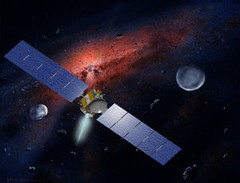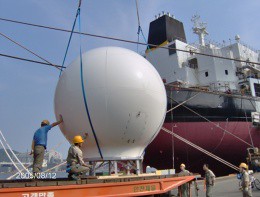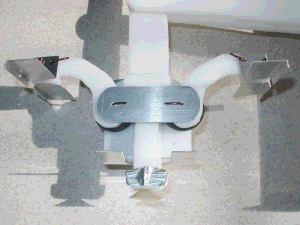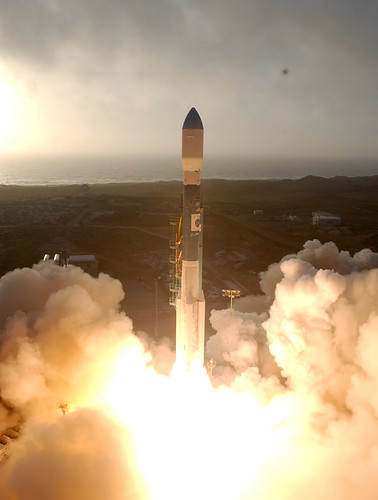To the Asteroid Belt!
Thursday, June 21st, 2007 NASA has scheduled a news briefing for next Tuesday, June 26, at 2 p.m. EDT.
NASA has scheduled a news briefing for next Tuesday, June 26, at 2 p.m. EDT.
The purpose of the news briefing is to preview the July 7 launch of the asteroid belt-bound Dawn mission.
Named "Dawn" because it is designed to study objects dating from the dawn of the solar system, Dawn will launch aboard a Delta II rocket from Cape Canaveral, Fla:
[The mission] will send the Dawn spacecraft, a robotic space probe, to the asteroid belt. Dawn will orbit and examine the two most massive members of the asteroid belt, the dwarf planet Ceres and the asteroid Vesta. Dawn will be the first spacecraft to enter into orbit around two different planetary bodies other than the Earth and Moon, and the first to visit the largest asteroid….
The mission’s goal is to characterize the conditions and processes of the solar system‘s earliest epoch by investigating in detail two of the largest protoplanets remaining intact since their formation. Ceres and Vesta have many contrasting characteristics that are thought to have resulted from them forming in two different regions of the early solar system; Ceres is theorized to have experienced a "cool and wet" formation that may have left it with subsurface water, and Vesta is theorized to have experienced a "hot and dry" formation that resulted in a differentiated interior and surface vulcanism.
To cruise from Earth to its targets it will use three DS1 heritage Xenon ion thrusters (firing only one at a time) to take it in a long outward spiral.
Images from the Hubble Space Telescope, such as the ones below, are being used by astronomers to help plan the mission:

Of particular note is that this Dawn almost never arrived:
The mission originally was approved in December 2001 and was set for launch in June 2006. Technical problems and other difficulties delayed the projected launch date to July 2007 and pushed the cost from its original estimate of $373 million to $446 million. The decision to cancel Dawn was made March 2, 2006, after about $257 million already had been spent. An additional expenditure of about $14 million would have been required to terminate the project.
The reinstatement resulted from a review process that is part of new management procedures established by NASA Administrator Michael Griffin.
The briefing will air live on NASA Television and be streamed on the agency’s Internet homepage at www.nasa.gov.











